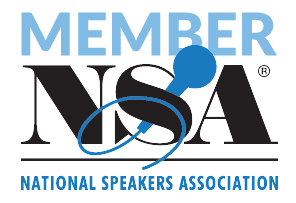 If you’re a leader struggling to shift your department from a negative to a positive work environment, you’re not alone. One of the most common complaints we hear from healthcare leaders is that their employees are so negative. From the time they walk in until they leave, they complain and blame. Everything is gloom and doom. As a result, morale is low and the good, positive employees are leaving in droves. You may think there is nothing you can do about it, but the good news – there is!
If you’re a leader struggling to shift your department from a negative to a positive work environment, you’re not alone. One of the most common complaints we hear from healthcare leaders is that their employees are so negative. From the time they walk in until they leave, they complain and blame. Everything is gloom and doom. As a result, morale is low and the good, positive employees are leaving in droves. You may think there is nothing you can do about it, but the good news – there is!
Why are some people so negative?
People are either born more positive or more negative. It’s actually genetic. However, people can be influenced to be more positive or negative by the people they surround themselves with, the TV shows that they watch, the music that they listen to, etc. At work, you can be born more positive, but when you enter into a negative work environment, you can become more negative too.
If you look at negativity itself, human beings are designed to be negative. It’s part of our survival instincts. Our amygdala is always on surveillance, constantly looking for anything that might affect our survival. To make matters worse, healthcare professionals are taught to constantly look for the negative so that we can assess the problem(s) and fix it.
Understanding the negativity bias
Humans think about 60,000 thoughts a day and 80% of them are negative. Some of you may be thinking that you’re not negative but others are, and that there’s no way you think that many negative thoughts. Let’s “test you:
Have you ever eaten at a restaurant, had great service, asked the server their name because you want to write a good review for them and them completely forgot to do it? But if you have bad service, you’re immediately on your phone, blowing up the restaurant in a Yelp review before you even leave the restaurant.
Guilty?
Why do we do that? We do it because of the negativity bias. It’s easier for our brains to criticize and find fault than it is to find compliment and find the positive. It takes less energy to identify what’s wrong than what’s right.
How many times have you thought something nice about someone, but never actually said it to them?
Why the negativity bias is important in healthcare
A study done by Michigan State University found productivity was directly affected, as “negative-minded workers are more likely to become burned out and defensive and experience a drop-off in production”.
Ignoring negativity leads to a drop in productivity and poor performance, so it’s important to address it. If your mom, spouse, partner, or child was in the hospital, you wouldn’t want them being taken care of by a department with a negative culture.
Here are 3 actions you must take to shift from a negative to a positive work environment:
-
Set CLEAR expectations for the behaviors you want to see (positive) and behaviors you don’t want to see (negative)
As the leader, it’s important that you set clear expectations for behavior. Gather your team together and talk about your intent to shift from a negative to a positive work environment. Get as specific as you can. For example:
This is how we greet each other/this is not how we greet each other.
When somebody says “good morning”, we say “good morning” back.
We say “please” and “thank you”.
We do not yell, curse, or openly criticize our co-workers.
-
Pivot mindset from blame to growth
How many of your employees are quick to blame their co-workers?
“It’s not my fault-it’s Shauna’s”. Or “He was supposed to ___”.
It’s easy to blame others when something doesn’t go well. However, instead of playing the blame game, establish an expectation that everyone pauses, takes a step back, acknowledges what happened, and asks how they can grow and improve from this – not blame someone else.
-
Make recognition a habit for a positive work environment
Recognition is a more powerful motivator than money, especially when it comes from a peer. Make it the norm that we show appreciation for each other. Encourage your teams to appreciate each other during huddles, meetings, shift changes, etc., until it becomes a habit.
Sarah McVanel of Greatness Magnified is a recognition expert who advocates for recognition as a cultural organization habit. Her research shows that when leaders and their teams thank each other and are specific with compliment, morale improves and employees stay.
Here are 3 of my favorite practical strategies to shift from a negative to a positive work environment:
-
Start each meeting/huddle with something positive
A way to frame every meeting/huddle is to start with something positive, like a recognition, celebration, a shout out to an employee, etc. Make sure it’s very specific on what they did.
“Super shout out to Laura who stayed and worked 4 extra hours to help out Katie, one of our new nurses.”
You always want to recognize and acknowledge those behaviors that are positive and the behaviors that you want repeated. If you don’t do huddles, find a reason every single day to pull your team together to do some type of recognition or acknowledgement at the very least.
-
Bookend your day
Connect with one person on your team on your way in to work, and one person on your way out every day.
“Hi Dan. Good morning, Dan.” Always say the person’s name. There’s nothing sweeter to the human brain than the sound of someone saying their name.
“You know, I was thinking about you the other day.” This makes them feel important, that somebody was thinking about them.
“I just wanted to check in with you. How are you, really?” Then say something specific about them, so make sure you know something about the person you plan on connecting with.
Then do the exact same thing with someone else on your way out. Try to get to everyone who does any work in your department.
This is a technique that I’ve adapted in different situations and is one of the most powerful things you can do as a leader. You only have control over 2 times during your day-what you do when you first go into work and what you do right before you leave. That’s it. Make it count.
-
Establish a “no complaining zone” in your breakroom
Your breakroom is supposed to be just that-a break. Yet more and more employees tell me that they get no break because the breakroom is being used as a venting room, for people to complain, gossip, and talk badly about patients and their families.
I get it-you need to be able to vent. We all do. But I want you to treat the breakroom as a “sacred space”, where there’s no complaining. If you do have to vent, try to either pull somebody aside and tell them you just need to vent for 2 minutes, or just say in the breakroom that you just need to vent for 30 seconds and to give you some grace to do that, and then promise to not vent anymore.
As a healthcare leader, you don’t have to accept the “that’s just the way it is here”, especially now that you have a few practical, simple strategies you can adopt. Before you know it, your culture will shift from the way it is now (negative) to where you want it to be (positive). As a result, your employees will stay, be more productive, and your patients will receive better care!













2 thoughts on “How to Shift from a Negative to Positive Work Environment”
Thank you Renee once again simple but effective methods of making a difference.
Thanks so much Pauline! Nobody has time for complicated strategies!